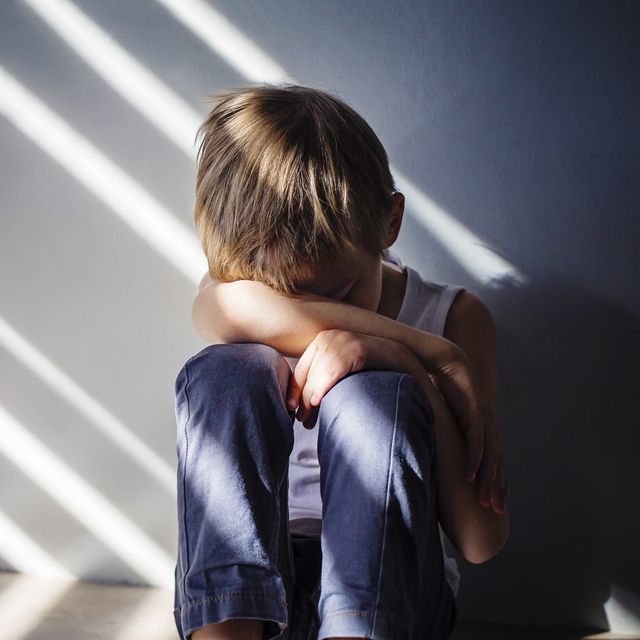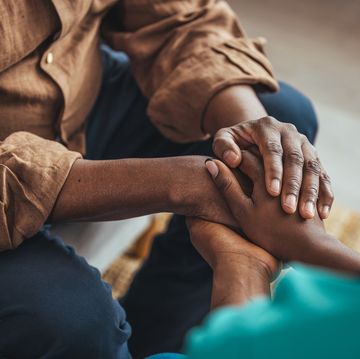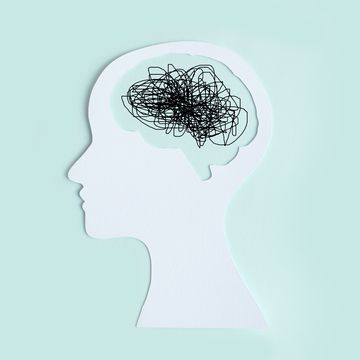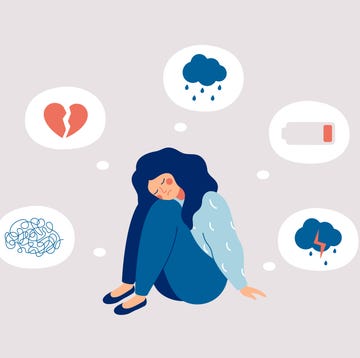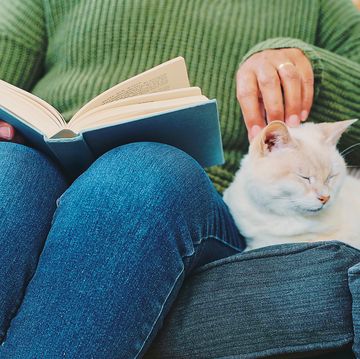- Approximately 4.4 million children ages 3 to 17 have been diagnosed with anxiety.
- Experts say kids whose parents exhibit anxious behaviors are more likely to show signs of anxiety themselves.
- There are a variety of strategies for helping children handle anxiety.
When most people think of anxiety, they think of full-blown, debilitating anxiety that causes people to struggle with their day-to-day living. However, anxious feelings are a normal part of life, even for children. Whether it’s being afraid of the dark, nervousness about meeting new people, or apprehension before a big test, all children experience anxiety occasionally. That doesn’t mean anything is wrong — as long as those feelings aren’t constant and extreme.
Experts say rather than trying to eliminate all anxiety (it’s impossible anyway), the goal is to help your child find ways to manage those anxious feelings.
Anxiety can be normal … and a good thing.
Just as kids experience happiness, sadness, anger, joy, and embarrassment, they also sometimes go through periods of anxiousness. Anxiety is that feeling of unease, worry, nervousness or fear we get when faced with a stressful or scary situation. “It’s a natural human emotion; yet unlike the other emotions, when someone feels anxious, we try to tell them to relax, to push down the anxiety and not feel it,” says Donna B. Pincus, Ph.D., director of the Child and Adolescent Fear and Anxiety Treatment Program at the Center for Anxiety and Related Disorders at Boston University.
Although anxiety can feel bad for kids in the moment, it has an upside. It’s part of the body’s fight-or-flight response system, which kicks in when the brain perceives a threat or danger. So, it’s built-in protection. “Without anxiety there would be no people left on earth — everyone would cheerfully walk in front of a bus, say something provocative to someone dangerous, and take candy from strangers,” says Lawrence Cohen, Ph.D., a psychologist and author of The Opposite of Worry: The Playful Parenting Approach to Childhood Anxieties and Fears. We want children to feel a little anxiety about doing the wrong thing (“I'll get in trouble, I'll feel bad”) and about excessive risks (“Ooh, not a wise idea”), but we don’t want them to have too much or not know how to handle it properly, he says.
The signs and symptoms can be obvious or vague.
There are some telltale signs that your child might be experiencing anxiety; however, it’s easy to mistake others for normal childhood behavior. To make matters more complicated, the signs can depend on the child’s age. “With younger kids who aren’t yet able to fully verbalize what they’re feeling, you may see tantrums, or the child may be overly clingy and will try to avoid things like going to ballet class or daycare,” says Dr. Pincus, who is also the author of Growing Up Brave: Expert Strategies for Helping Your Child Overcome Fear, Stress, and Anxiety. “Your child may cry or scream when it’s time to go somewhere or do a particular activity, and it’s easy to misinterpret that as oppositional behavior when sometimes it’s really anxiety,” she says.
Of course, most older kids probably won’t throw a kicking-and-screaming tantrum, but you may notice your child is more irritable or angry. School-age kids and teens may also try to avoid things that make them nervous, but they tend to be more clever in their avoidance techniques; your child may feign sickness to get out of going to school, say she’s no longer interested in dance class, or claim she has to study when you want her to meet the new neighbors. Older children might also talk about their worries. “You may hear your child say things like, ‘I’m worried,’ or ‘I can’t get something off my mind,’” Dr. Pincus says.
On the other hand, your kid may just seem sad. “Anxiety and depression are very commonly co-occurring, because if anxiety stops the child from doing things that are developmentally appropriate, like going to birthday parties, hanging out with friends, or going to the school dance, he or she may start to have more feelings of sadness,” Dr. Pincus explains.
In both younger and older kids, anxiety may cause concentration problems or sleep disturbances. It can also manifest itself physically. Your child may complain of a headache or stomachache. And kids may spend a bit of time in the nurse’s office. “It’s very commonplace for school-age kids with anxiety to go to the school nurse, because they’re not sure what exactly is happening, but they can feel the symptoms physically,” Dr. Pincus says.
Kids have plenty of reasons to be anxious.
Although some things can cause anxiety in children of all ages, such as trying something new for the first time or speaking in front of a group, some anxieties tend to be more common during certain phases of development.
Babies. Yes, babies can experience anxiety. Usually, it’s due to separation from parents. “When the baby is apart from the main caregiver, he fears that person won't return or that he won’t survive without them,” Dr. Cohen says. Babies may look nervous, cry inconsolably, be fussy and irritable, or look around anxiously for help, she says, while others may withdraw or even fall asleep in a sort of "shutdown mode."
Toddlers and preschoolers. At this stage, young children’s anxieties may still involve separation from loved ones, but it’s also common for them to be apprehensive about strangers, costumed characters, animals, loud noises, and even toilet training. “Children at this age have the ability to imagine something that's not there, so they may also become afraid of the dark or monsters under the bed,” says Dr. Pincus.
School-age. Once kids are in school, some common worries include impressing their peers, performing well in school, making parents happy, things they've seen on the news, and family issues (like a sick loved one or loss of employment).
Tweens and teens. Kids in this age group tend to worry about their peer group, academics, athletic performance, crushes and relationships, and material possessions. Social media is another big concern. “Tweens and teens are especially susceptible to the constant mood swings from counting the number of likes to their posts, counting the seconds before someone responds to a text, and absorbing the false and painful messages that make it look like everyone else's life is perfect and theirs is terrible,” Dr. Cohen says. As if all of that isn’t enough, older teens also tend to worry about the future (getting a job, college, and so on).
Anxiety disorders are more serious.
The difference between regular anxiety and an anxiety disorder is the severity and length of time it occurs. Whereas everyday anxiety tends to be short and harmless, an anxiety disorder can be chronic and interfere with your child’s daily routine, the Anxiety and Depression Association of America (ADAA) notes. For example, a child with normal anxiety might feel anxious for a week or two about starting a new school, but one with a true anxiety disorder might feel anxious for months, so much so that they become physically ill and can’t attend classes.
The Centers for Disease Control and Prevention (CDC) notes that there are different types of anxiety, including separation anxiety, social anxiety, generalized anxiety (excessive worry about a variety of things such as the future or bad things happening), phobias (fear of a specific object or situation, like dogs or storms), and panic disorder (sudden, intense fear with symptoms such as rapid heartbeat, shortness of breath, sweating, dizziness or lightheadedness, or a feeling of doom).
If your child’s fears or worries are persistent, overly intense, causing him to avoid developmentally appropriate activities, or hampering his ability to participate in school, family, or social activities, discuss it with his primary care provider or a mental health specialist, Dr. Pincus says. Fortunately, anxiety disorders can be treated. A common treatment for children and teens is cognitive behavioral therapy (CBT). It helps kids replace negative thoughts and behaviors with more positive ones, thereby reducing their anxiety, the CDC reports. In some cases, depending on the severity of the anxiety, prescription medication or a combination of CBT and medication may be necessary.
If your kid is anxious, take these steps.
- First, empathize. “Have your child explain what he’s anxious about, and listen carefully,” says Jephtha Tausig, Ph.D., a clinical psychologist in New York City. Then, show you understand by using supportive language, such as, “It’s normal to feel nervous about taking the bus for the first time.” Don’t judge, dismiss or ridicule your child’s fears.
- Teach ways to self-calm. Help your kid think of strategies she can use when she feels anxious. For young children, you might suggest turning to a favorite stuffed animal for comfort. Or counting. “Ask your child to give the anxiety a number from one to ten — or 1 to 100 — and then have her slowly count down from that number to zero,” Dr. Cohen says. An older kid could practice deep breathing or write her thoughts down on paper and then tear it up and throw it away. You can also teach your kid to use positive self-talk. For example, “I studied for the test, so I should do well,” instead of “I’m probably going to fail the test.” And, of course, let your child know she can come to you if she needs help.
- Model calm behavior when facing your anxieties. “If you panic when confronted with certain things, like insects or thunderstorms, then your children may also come to view these things as dangerous or frightening,” Dr. Tausig says. Even if you think you’re hiding it, your child senses your anxiety. “Children are smart, and many will pick up on things even if they aren’t explicitly mentioned,” says Dr. Tausig.
- Consider your parenting style. “Hovering and helicopter parenting doesn’t make children safe; it makes them anxious,” Dr. Cohen says. “Doing too much for your children, instead of allowing for manageable challenges, gives children the idea that their parents don't think they are competent, which makes the world very scary,” he says.
- Gradually confront the anxiety trigger. “You can take any situation that makes your child anxious and create a bravery ladder that gradually allows your child to face her fear,” says Dr. Pincus. She recommends breaking the objective down into smaller steps, making each one a touch harder. For example, if your child’s anxiety is about attending a sleepover, a bottom step might be sleeping in a sibling’s room, a couple of steps up might be sleeping at a cousin’s house, and the very top could be going to a sleepover at a friend’s house.
- Know when to get help. If your child’s fears or worries fit the criteria of an anxiety disorder mentioned above, discuss it with his pediatrician or a mental health provider.
For can't-miss news, expert beauty advice, genius home solutions, delicious recipes, and lots more, sign up for the Good Housekeeping newsletter.
